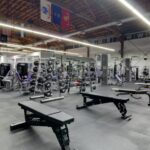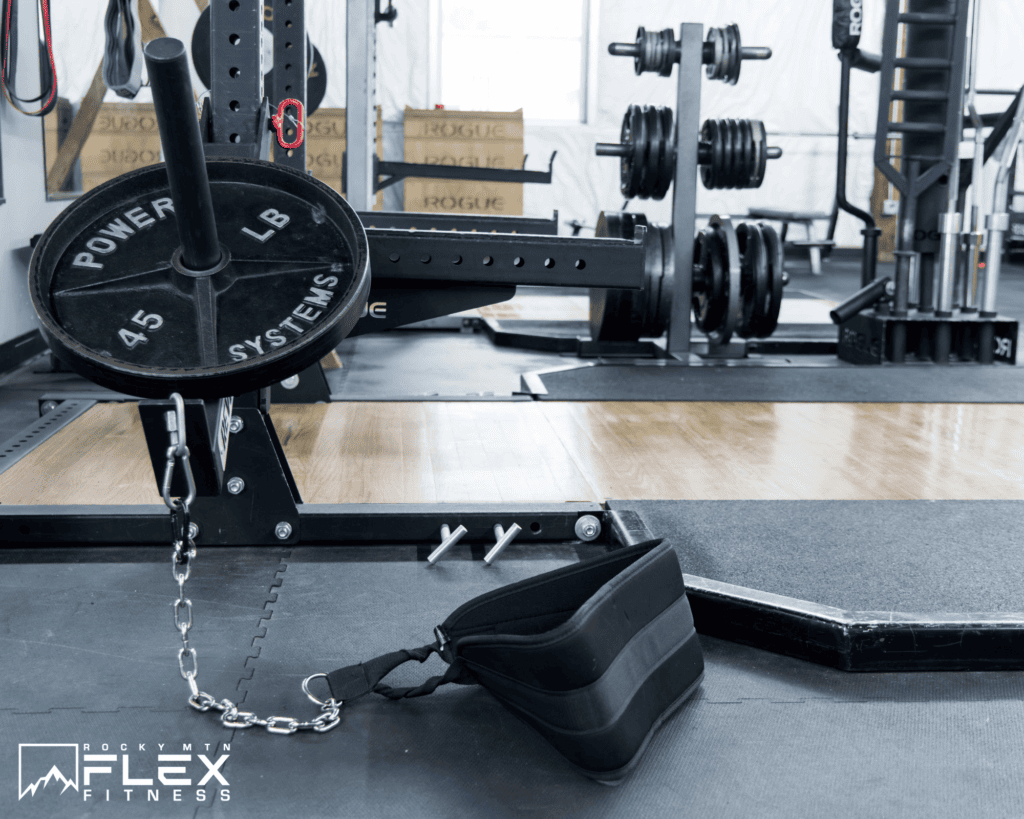One thing you’ll notice about Rocky Mountain Flex members is that they are serious about their training, specifically their lifts. We have everything from the casual lifter and bodybuilders to powerlifters who want to move as efficiently as possible. So as we updated the current class schedule, we were happy to include two mobility classes that would help maximize how well our members move. We also know that mobility work often gets pushed to the side if one is running low on time so this is the perfect way to help members stay on top of their mobility work.
Why focus on mobility training?
In our sedentary lifestyles, being hunched behind computers and phones with poor posture for extended periods of time can lead to joint stiffness, aches, and pains. It is important to incorporate intentional joint movement to improve mobility and counteract this prolonged immobility, as it affects all aspects of our lives, especially as we age.
Mobility training has gained popularity over the years as gymgoers recognize the potential to maximize their progress outside of their current lifting routines. Having full range of motion supports lifting heavier and gaining strength as muscles achieve improved joint position and optimal stabilization. Joint position, in turn, dictates muscle action. Mobility work also helps with injury prevention, as the greater range of motion allows you to get deeper in your squat and lift heavier without the restriction of tight muscles and stiff joints.
Better mobility is beneficial both in and out of the gym. When you move better, you will be less likely to experience random injuries like tweaking your back while unloading the car or picking your child up out of the bath. You know those mystery injuries that just make you feel old because you feel like you weren’t doing anything significant?
By incorporating specific mobility exercises into your routine, you not only enhance functional fitness, making daily activities more efficient but also broaden your range of movement for smoother motions in various activities. This training approach plays a crucial role in building stronger and more adaptable muscles and joints, fostering resilience to handle diverse physical stresses. As a result, it contributes to overall strength and joint durability.
It is a key element in enhancing athletic performance and joint health by promoting the increase of blood flow and synovial fluid, which are essential for joint lubrication to reduce stiffness and keep joints moving smoothly. In the context of sedentary lifestyles, where prolonged sitting can lead to joint stiffness, embracing movement through mobility training becomes imperative. It not only counters the effects of prolonged immobility but also actively cultivates greater joint flexibility and overall mobility.
What is mobility training?
Mobility training is a structured set of exercises and movements meant to improve the flexibility, range of motion, and overall function of muscles and joints. It goes beyond traditional stretching, which just works to passively lengthen the muscle, to focusing on intentionally moving the joints and their surrounding tissues to both lengthen tight tissues as well as engage weak muscles to help better move the joint or limb into a deeper, more optimal position. When our muscles are tight and range of motion is poor, the assistance muscles, aka the synergists, start to overcompensate, which causes your main muscles, the prime mover, to not fire and do their job as well.

Picture yourself doing a shoulder press with a barbell. If your shoulder joints have limited mobility, you might struggle to establish a strong scapulohumeral position, leading to a poor relationship between the wrists, elbows, and shoulder. You might be stuck in too much of an internally rotated position, leading to difficulty getting the elbows under the wrist and bar, causing improper leverage and bar path movement while pressing overhead. In the example, this limitation can lead to decreased deltoid activation and an increased risk of injury. Without the ability to properly stabilize the shoulder and position the upper body, you miss out on the opportunity to engage the targeted muscles effectively, ultimately hindering strength in the exercise.
The goal is to enhance the ability to move easily and effectively, which can improve performance in various activities, really working the intended muscles, and lowering the risk of injury. Remember, joint position dictates muscle action. With the correct joint position and stability at that point, you will have better leverage. With better leverage comes better efficiency and better engagement of the prime movers and synergists, making you automatically stronger.
Get started with some of these mobility exercises:
- Lacrosse ball massage for trigger point release
- Foam rolling
- Cat-cow pose
- Shoulder pass-through
- Arm and shoulder circles
- Chest and shoulder openers
- The world’s greatest stretch
- Frog squat
- Hip circles
- Leg swings
- Ankle circles
- Lateral lunge
You can incorporate these exercises into your training routine, aiming for 5-15 minutes daily and working up to 15-30 minute sessions that progress over time as you make improvements in your biomechanics.
This type of training can benefit people of all fitness levels, from athletes wanting to improve their performance and build more muscle to those looking for better joint health in everyday life and in activities such as skiing, snowboarding, rock climbing, etc.
What is the difference between mobility and flexibility?
Understanding the distinction between mobility and flexibility is essential for optimizing performance because each plays an important role. Flexibility focuses on the ability of muscles to stretch and lengthen during a movement.
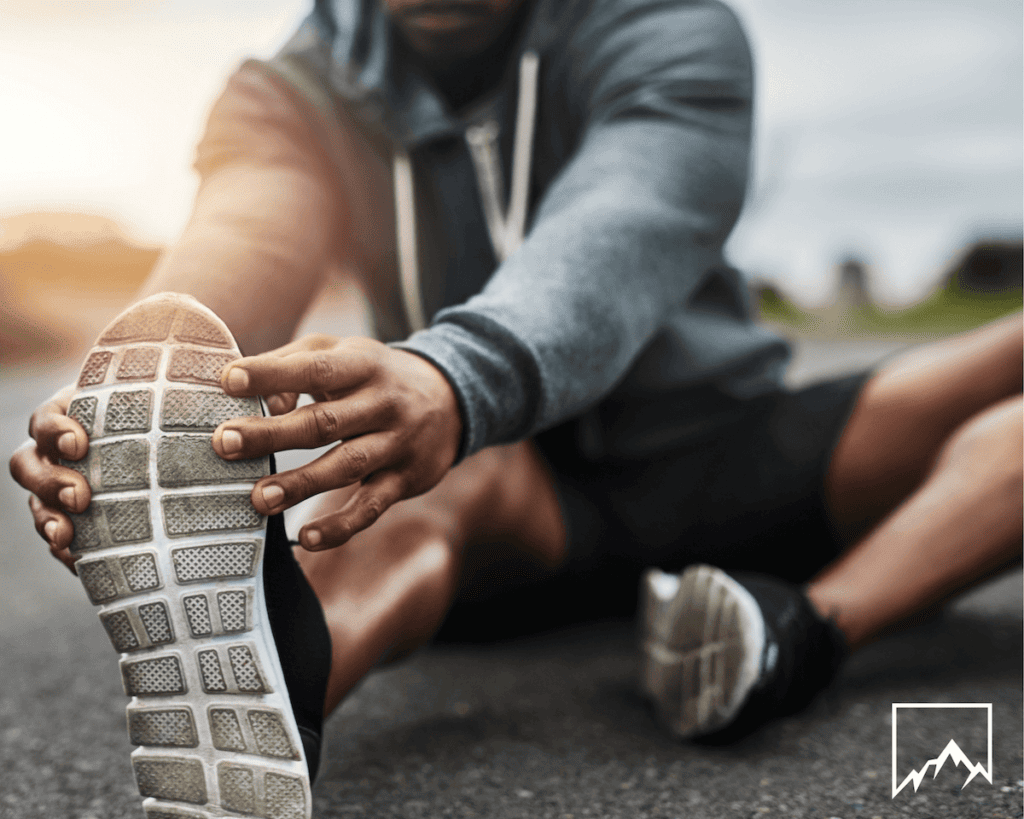
On the other hand, mobility is the ability to move muscles smoothly through a range of motion. You can have good mobility without being flexible.
Flexibility can be compared to the stretch of a rubber band – the more flexible it is, the easier it can stretch. For example, flexibility is beneficial for a gymnast who performs backbends, splits, leaps, etc.
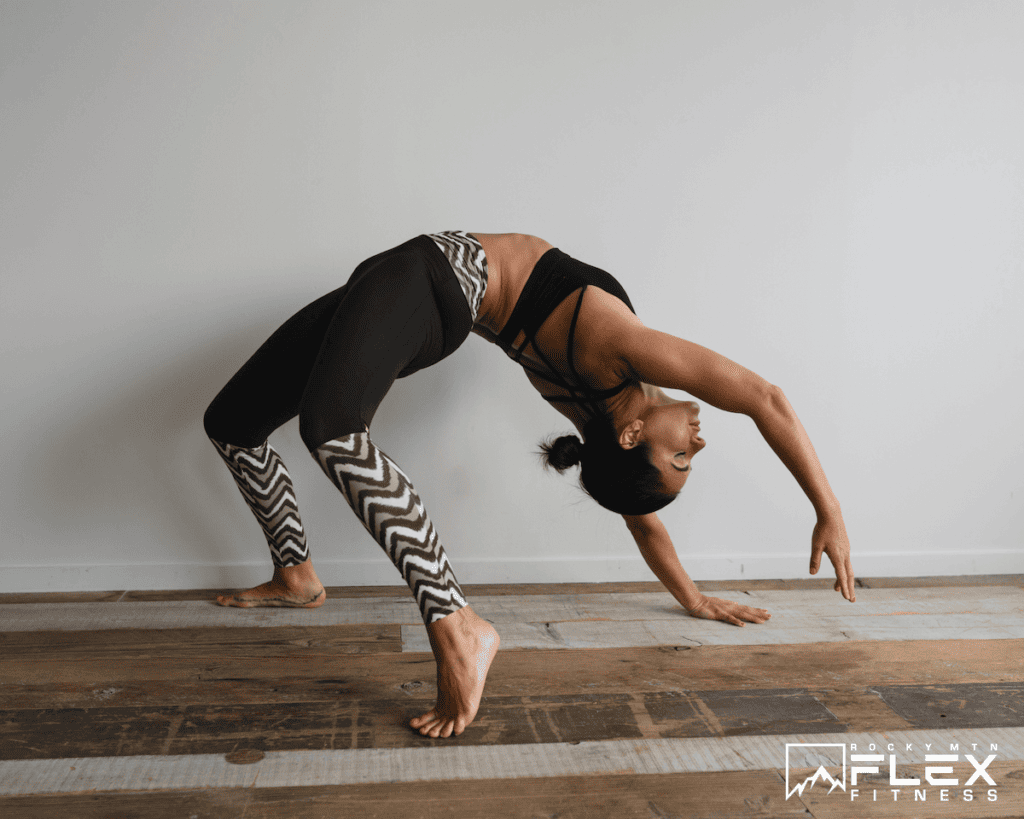
While mobility is more about the coordinated movement of your joints and their ability to move well and stabilize through a full range of motion, which allows for seamless flow during various activities such as strength training, football, soccer, baseball, tennis, rock climbing, and general daily movements such as bending down, twisting, lifting your hands over your head, etc. Mobility is just as much about actively strengthening weak tissues as it is about improving flexibility and range.
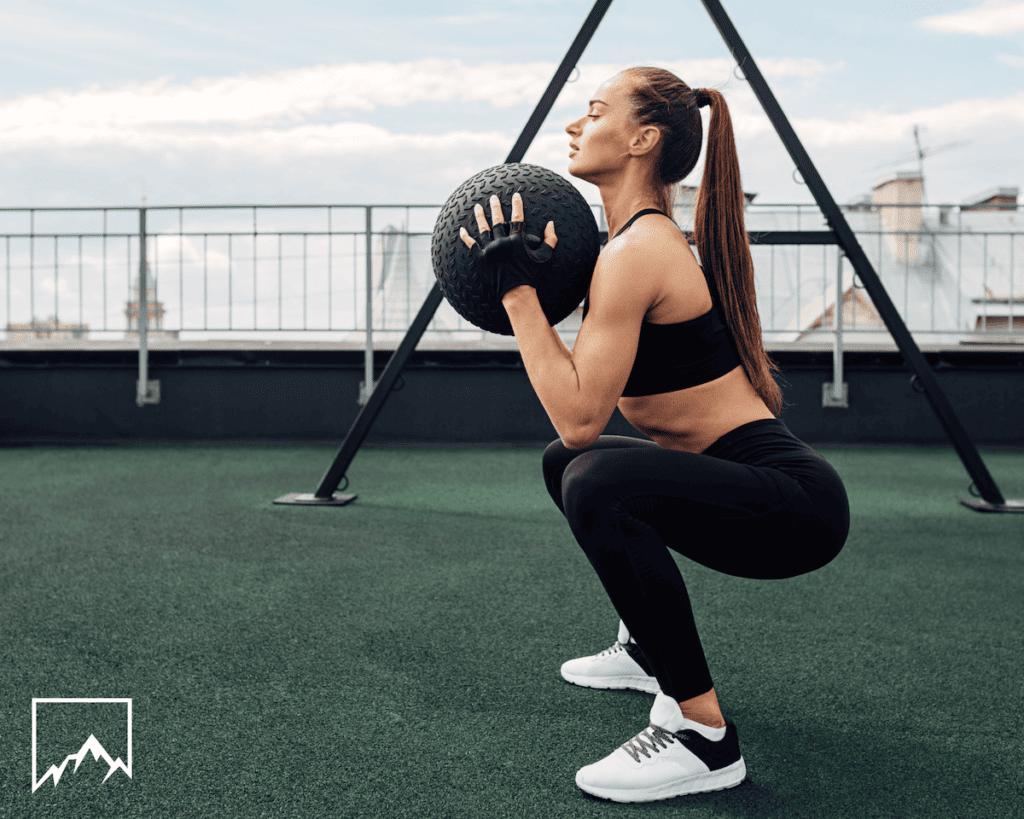
Both flexibility and mobility are important, and they work together to prevent limitations in day-to-day movements and improve overall physical performance.
About our mobility classes in Denver
Nick Kripowicz is one of our knowledgeable personal trainers who leads the hip and shoulder mobility classes. He specializes in strength and conditioning, functional range conditioning, and powerlifting, helping athletes at every level build resilience, reduce injury risk, and improve performance.
“Staying healthy and injury-free is critical to reaching any goal – you can’t train if you’re hurt, and you need healthy joints if you want to use them for hard training.” – Nick Kripowicz
Why should you focus on hip and shoulder mobility?
All mobility areas are important but the hips and shoulders are key players as they are ball and socket joints, spanning all planes of motion and connecting extremities to the torso. Successful movement hinges on ample mobility in these joints – arm movement depends on healthy shoulders, and leg movement relies on flexible hips. Hence, mobility training is key in these two areas.
Below you will find information on the shoulder and hip mobility workouts at Rocky Mountain Flex.
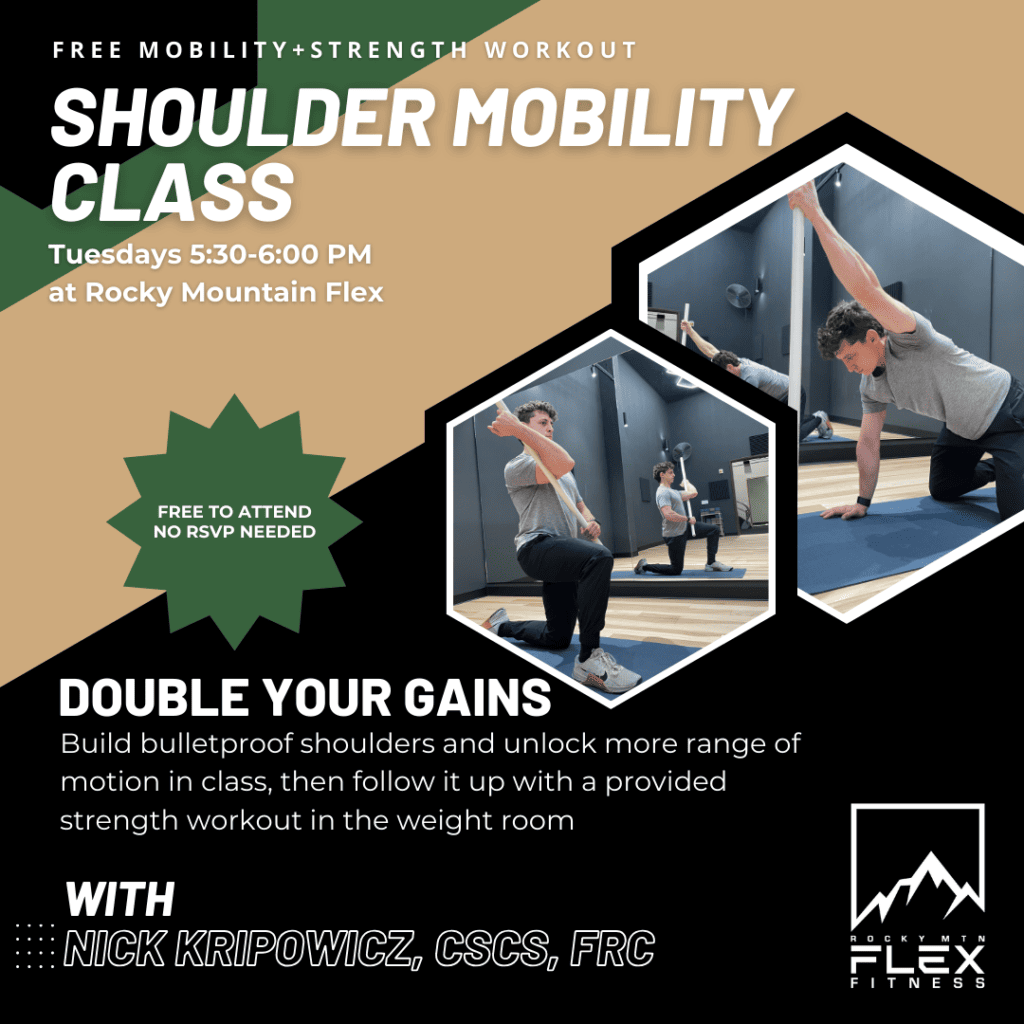
New Shoulder Mobility Class:
When: Tuesdays from 5:30-6:00 PM
Where: Rocky Mountain Flex Fitness, 900 W 1st Ave Unit 170, Denver, CO 80223
What: Double your gains: With this class, you can start to build bulletproof shoulders and unlock more range of motion in this 30-minute class, and then Nick will provide you with a strength workout that you can do in the weight room on your own.
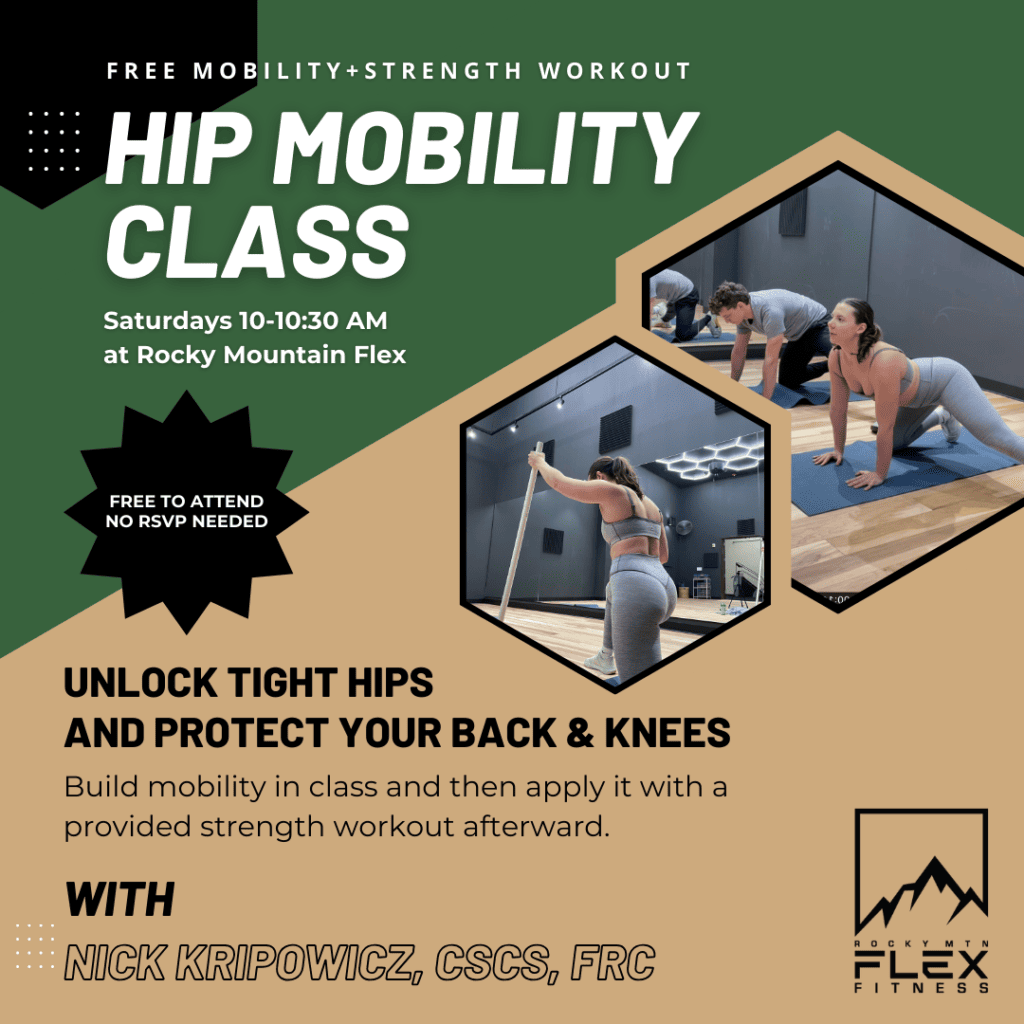
New Hip Mobility Class:
When: Saturdays from 10-10:30 AM
Where: Rocky Mountain Flex Fitness, 900 W 1st Ave Unit 170, Denver, CO 80223
What: Unlock tight hips and protect your back and knees. In this class, you will start to build mobility in your hips and then apply it in the weight room with the provided strength workout from Nick.
Are you looking for mobility training in Denver?
If you are in Denver and looking for a great mobility training program, come check out one of our classes or opt to work with Nick or one of our other trainers one-on-one! These classes are free for all members.
Sign up for our FREE 7-Day Pass to try out the gym and attend the weekly hip and shoulder mobility classes!


